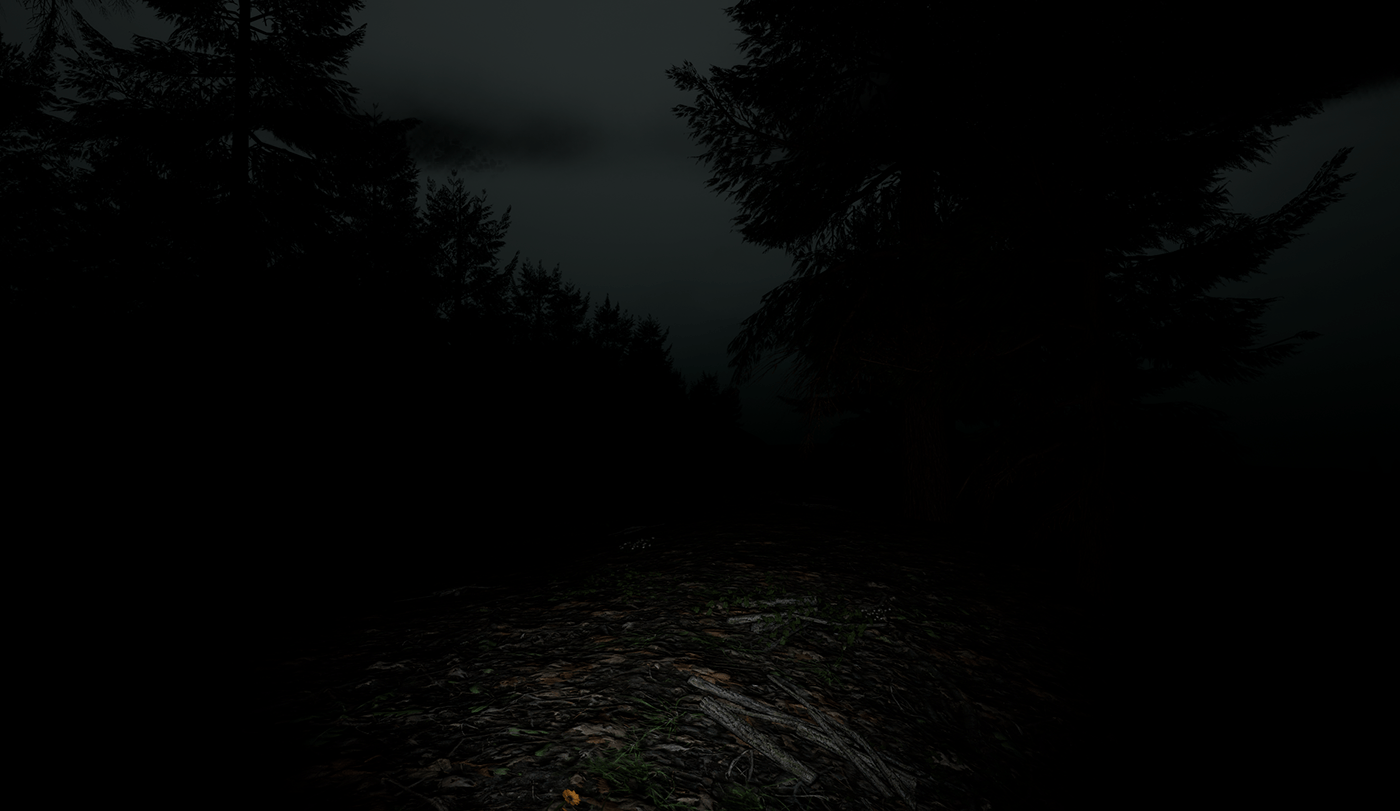There isn't much that is more important to a horror experience than environment and atmosphere. I created this environment using Unreal Engines landscape tool as well as a tool called Terrain Magic. This tool enabled me to import satellite imagery, and after a few custom tweaks, create a true to life recreation of a section along the northern shore of Lake Superior in the Canadian woods. This inclusion of real-world locations enhances the game's sense of place and tangibility, which intensifies the players immersion, and allows for a more realistic depiction of this natural environment. Due to the differences in scale between the satellite imagery and unreal engines landscapes, creating a realistically scaled landscape took quite a bit of trial and error. But it has taught me greatly what scale truly means, and how to implement it in a game.
I populated this world by employing procedural generation technology. This technique allowed me to create a realistic and expansive woodland that is full of random spawns, transformations, and placement of instanced foliage actors. These actors could even grow overtime, and change with each new game, allowing the game to have replayability and maintain its mysterious nature. This also allows the forest to feel alive, unpredictable, and mirrors the sinister nature of the survival horror genre.
This was perhaps the most difficult part of the environment design for me to achieve. It took a lot of tweaking to create a believable woodland environment. That being said, utilizing this procedural generation technology saved me a lot of development time. It allowed me to populate the world at scale without having to manually paint in my foliage actors. And the randomness of it is a more realistic representation of nature in its chaos.
Perhaps the most important to my environment design was the audio design. I employed infrasound, an audio frequency below the range of human hearing, to induce feelings of unease, tension, anxiety, and suspense. This technique, borrowed from horror films and games, is known for its capacity to trigger subconscious fear responses. By utilizing infrasound in the games audio landscape, I was able to create an underlying sense of dread that lingers, evoking discomfort and heightened alertness.
I also integrated realistic forest sounds to foster an immersive and suspenseful environment. The rustling of leaves, calling of crickets, and creaking trees surrounds the player in an atmosphere thick with immersion and foreboding. These serene sounds juxtaposed with the ominous undertones of the infrasound and game setting, amplifies the feeling of isolation and vulnerability that is integral to the survival horror experience.
I have chosen to showcase this artifact in My Portfolio because it serves as a demonstration of my ability to achieve an environment that feels genuine and unsettling. The use of procedural generation adds an element of unpredictability, mystery, and suspense. It also allows me to quickly iterate through my environment designs and test new ideas. The employment of infrasound in the audio exhibits my understanding of psychological horror, and my commitment to creating a deeply atmospheric and immersive experience for the player.

Utilizing Satellite imagery of the northern shore of lake superior, and extracting it into a height-map and the tool "Terrain Magic". I was able to re-create a section of the Canadian coastline of Lake Superior.





The Procedural Foliage system creates a dynamic forest with foliage that grows over time and in unique ways!


An immersive nighttime environment.
I utilize Infra-sound and sounds recorded here in the woods of New Hampshire to subliminally and subconsciously increase the tension and suspense when traversing the dark woods.
